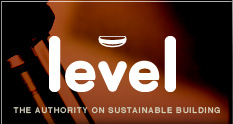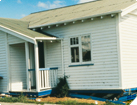- Home
- Site Analysis
- Site Use
- Passive Design
- Water
- Material Use
- Energy
- Wet Areas
- Health and Safety
- Other Resources
Site Analysis
Understanding all the features of a site, using and protecting the best, and minimising the impact of the worst.
Hazards
Potential hazards may be the result of human activity, such as contamination and pollution, and wildfires, and natural hazards, such as storms, floods, earthquakes, geothermal activity, landslides and erosion, tsunamis and rising sea levels.
For each type of hazard, consider:
- Has it happened in the past?
- Could it happen on this site?
- What is the chance of it happening in future?
- How much harm or damage could it cause?
- Does the risk associated with the hazard require further action?
Natural hazards
Natural hazards are by far the biggest risk to consider. Figures from the insurer Lloyds show that New Zealand has the second-highest annual expected losses from natural catastrophes as a % of GDP in the world. (Only Bangladesh is higher).
Local councils commonly have online maps identifying areas at risk of natural hazards such as flooding, erosion, liquefaction, landslides or tsunamis.
New Zealand Building Code
The New Zealand Building Code is concerned with the health and safety of building occupants. It requires that, in the event of a hazard, occupants must be able to evacuate the building safely, but does not require that, after a major hazard such as an earthquake, a building will remain structurally sound. A specific requirement to do so is likely to require a design in excess of NZBC requirements.
Building Act restrictions
Under Section 71 of the Building Act, building consent authorities must refuse to grant a building consent for construction of a building (or major alterations to a building) if:
- the land is subject or is likely to be subject to 1 or more natural hazards (erosion, falling debris, subsidence, inundation [flooding] or slippage); or
- building work is likely to accelerate, worsen, or result in a natural hazard on that land or any other property.
BCAs can, however, issue consent if they are satisfied that there is adequate provision:
- to protect the land, building work, or other property from the natural hazard or hazards; or
- to restore any damage to that land or other property as a result of the building work.
BCAs must issue a consent for building on land subject to natural hazards if they consider that the work will not worsen the hazard and they believe it is reasonable to grant a waiver or modification of the Building Code for the natural hazard concerned (Section 72).
If consent is given for building on land subject to natural hazard, a note will be added to the certificate of title that a building consent was granted under Section 72, identifying the natural hazard concerned.
Where a land title has a Section 72 note on it:
- The building consent authority is exempted from liability for damage arising from the natural hazard.
- The Earthquake Commission (Toka Tū Ake EQC) can legally decline to provide cover, depending on the nature of the hazard.
- Insurance companies may decline to offer cover or may exclude cover for the relevant hazard.
Microclimate hazards
On some sites there may be hazardous microclimates that may lead to problems such as rapid corrosion of metal fasteners and fixings. As an example, the scope of NZS 3604 Timber-framed buildings specifically excludes:
- Industrial contamination and corrosive atmospheres
- Contamination from agricultural chemicals or fertilisers
- Geothermal hot spots – areas within 50 m of a bore, mud pool, steam vent, or other source.
In these circumstances, construction requires specific engineering design (SED).
Fire risk
Wildfires are a growing risk on the edges of towns and cities and towns where forests or scrub and homes are in close proximity.
The Lake Ōhau fire in October 2020 destroyed 48 homes and damaged more. There were 154 house and contents insurance claims after the fire totalling over $34 million.
Climate change hazards
Because houses built today will have a life of more than 50 years, homeowners and designers must consider climate changes likely to affect a site in coming decades. These may involve rising sea levels for coastal property, more frequent floods for low-lying areas, or higher temperatures in some regions.
In 2022 guidance around sea level projections, the Ministry for the Environment said that for New Zealand, nuisance and extreme coastal flooding have already increased since 2000 because of a higher mean sea level. It quoted a UN finding, made with high confidence, “that coastal risks will increase by at least 10-fold over this century due to already committed sea-level rise”.
While most people think of earthquake damage when they think of Earthquake Commission (Toka Tū Ake EQ) payouts, in fact EQC has paid out on 15,196 weather-related claims in the years 2000–2017. The total was $450 million, with approximately one third of that for damage to buildings. Work published by Motu Economic and Public Policy Research in early 2020 indicates that more extreme weather events brought by climate change are likely to increase costs for EQC by 9–25%.
Updated: 20 October 2023


